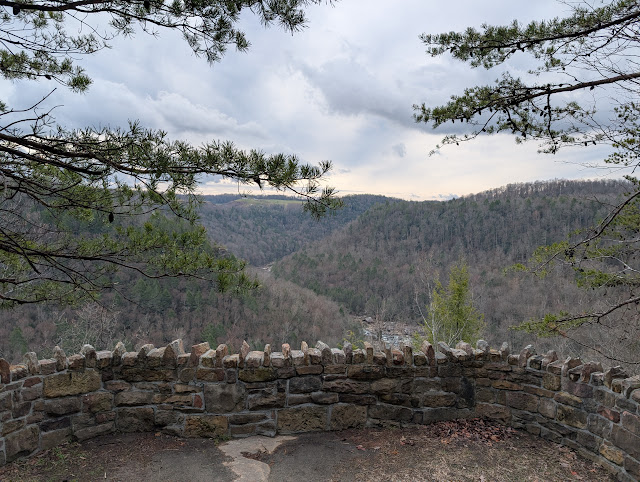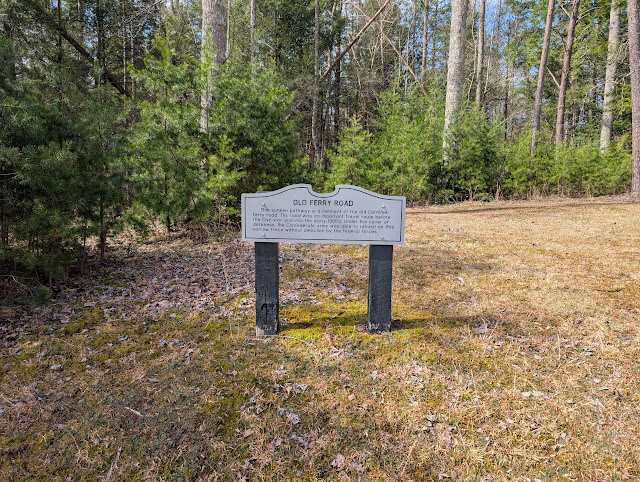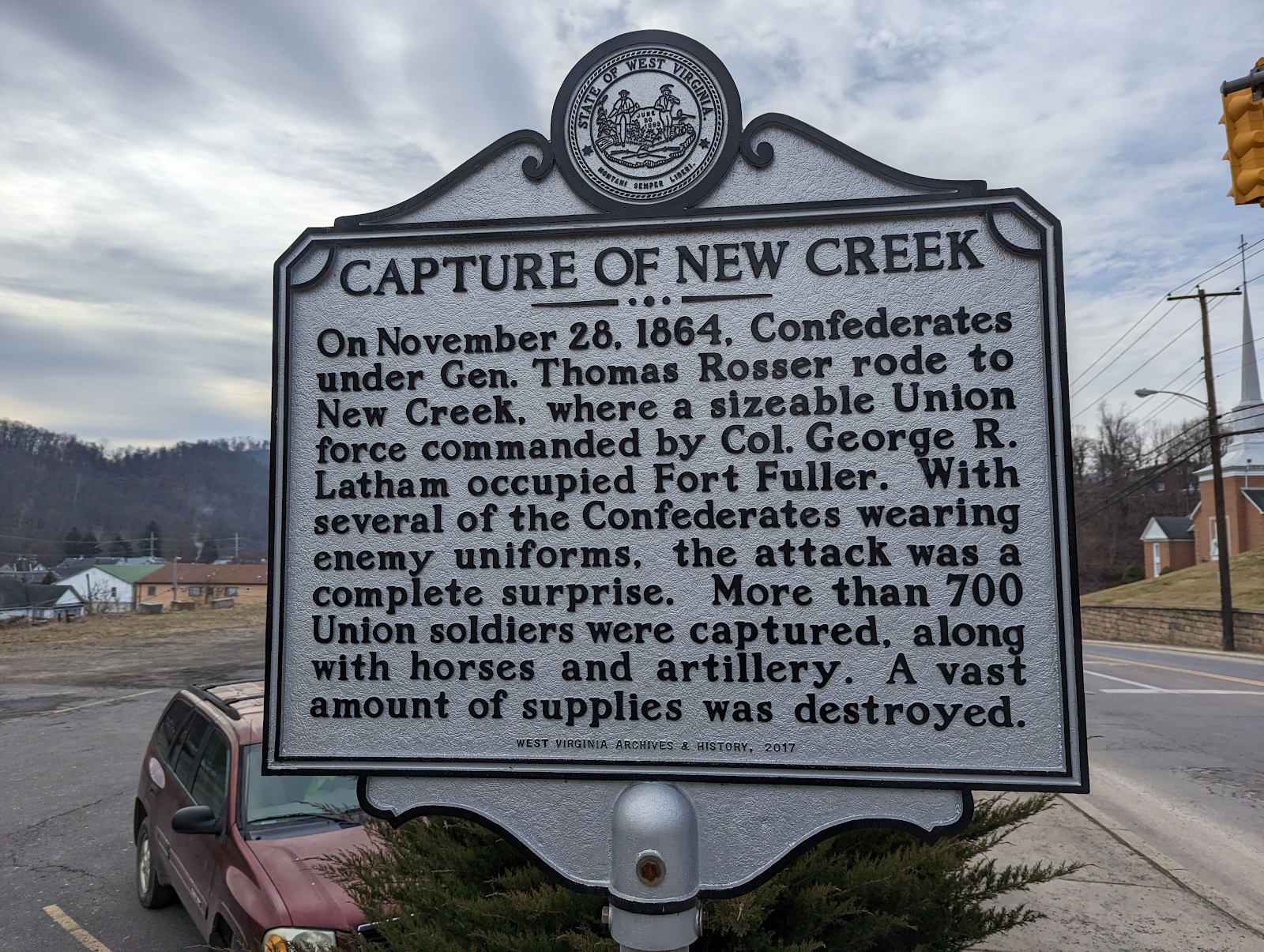Sept. 10, 1861
Battle of Carnifex Ferry
["Nestled on the rim of the Gauley River Canyon near"] Summersville, West[ern] Virginia
Brigadier General William S. Rosecrans > Col. William S. Smith (U.S. Colonel John W. Lowe)
vs.
Brigadier General John B. Floyd

 |
https://www.hmdb.org/m.asp?m=20864&Result=1
Built in the 1850's by Mr. Patterson, this house was caught between opposing armies during the Battle of Carnifex Ferry.
You can see it here! |
 |
https://www.hmdb.org/m.asp?m=20876
The Battle of Carnifex Ferry
Seeking to gain a foothold in Western Virginia from which to conduct military operations, Gen. John B. Floyd, C.S.A. with approx. 1,800 troops established Camp Gauley here on the Patterson Farm about one mile from Carnifex Ferry.
Gen. William Rosecrans, U.S.A. with nearly 7,000 troops was ordered from Clarksburg to march on Floyd. It was the afternoon of Sept. 10, 1861 when the Federals came in sight of Camp Gauley and the battle commenced. Rosecrans used only part of his forces in the attack and the well entrenched Confederates were able to successfully drive back the Yankee troops. With darkness approaching, Rosecrans decided to wait until morning before launching a major offensive.
Gen. Floyd reassessed his situation and decided to withdraw across the river during the night rather than face a superior force in the morning. He accomplished this maneuver without alerting the Union troops. The following morning, the Federals moved into Camp Gauley without incident and a vital line was secured by the Union, thus enabling the movement for West Virginia statehood to proceed.
Although Gen. Rosecrans could rightfully claim victory, the North lost more men than the South in the battle. Federal casualties were over 130 with 28 killed while Southern losses were near 30 with no reported fatalities.
|
 |
https://www.hmdb.org/m.asp?m=165002
Most of the lumber used for the rebuilding of this well house came from a large white oak tree that uprooted during a windstorm in 2000. The tree grew near the edge of the woods behind the Patterson House and was determined to be approximately 150 years old. From its location the tree witnessed many events, including the battle fought here in 1861. If trees could talk, imagine the stories they might tell. |
 |
| Great trail, circumventing the whole park, with some stunning overlooks... |
 |
https://www.hmdb.org/m.asp?m=169490
Late in the afternoon, as part of an attempt to make a coordinated attack on the Rebel line, several Federal units under the command of Col. William S. Smith were ordered deep into this ravine known as Pierson Hollow. The plan was called off though because of the fading daylight. Confused, tired, and traveling in darkness while in the thick woods, members of the 13th and 23rd Ohio mistakenly fired upon the 28th Ohio. Two soldiers were killed and some 30 men wounded. |
 |
| Gauley River |
 |
https://www.hmdb.org/m.asp?m=20845
The Civil War battle fought here on September 10, 1861 was named by the Union army after a nearby river ferry. Even though it was over a mile downstream, the ferry was the closest well-known landmark. Constructed by William Carnefix in the early 1800's, the ferry provided an important link between the James River & Kanawha Turnpike, now Rt. 60, and the Gauley & Weston Turnpike, now part of Rts. 39 & 19. The spelling of the name Carnifex has varied over the years. The heading above is the spelling found on the gravestone of Mr. Carnefix who died in 1856. |
Since there are no Civil War Trail markers at this location, I essentially drove 1,000 miles round trip (in 36 hours) [this was March 2025] to see THIS sign:
 |
https://www.hmdb.org/m.asp?m=169492
Scene of battle, Sept. 10, 1861, between Federal army of Gen. W.S. Rosecrans and Confederate army of Gen. John B. Floyd. Engagement followed defeat of Federals at Cross Lanes, Aug. 26, 1861. State acquired site, Oct. 29, 1935. |
 |
https://www.hmdb.org/m.asp?m=165005
This sunken pathway is a remnant of the old Carnifex Ferry road. The road was an important travel route before the Civil war and into the early 1900's. Under the cover of darkness, the Confederate army was able to retreat on this narrow trace without detection by the Federal forces. |
 |
https://www.hmdb.org/m.asp?m=21188
Used in battle reenactments, these log breastworks stand near the site of the original Confederate entrenchments designated by General Floyd as Camp Gauley. The rebel fortifications consisted of several thousand feet of log breastworks, trenches, wooden palisades, and felled trees with sharpened branches. Although lightly manned with less than 2000 troops, Camp Gauley presented a formidable challenge to the Federal troops who had to approach across open ground.
|
 |
https://www.hmdb.org/m.asp?m=165006
"We promptly returned the fire, at this time our cannon sent a fearful shot amongst them… Then commenced the fight in earnest. Boom went the cannon of our enemy, the large balls whistling over our heads, our men flat on the ground,… Then came a terrible shot of shell, it burst and fell all around us; The bullets fell like rain whistling and whizzing over our heads and into the logs we lay behind." Capt. Robert Winn Snead, Co. F, 50th Va Inf. C.S.A. |
 |
https://www.hmdb.org/m.asp?m=164998
The Patterson family kept a large cornfield just north of their house. It was in the cornfield that U.S. Colonel John W. Lowe was struck and killed by rebel gunfire while shouting his final order to the men of the 12th Ohio. His death while leading his men into battle made him a hero. He also became the first field grade officer from Ohio to be killed in the Civil War. |

 |
https://www.hmdb.org/m.asp?m=164999
Granville Blevens of Grayson county, Virginia, joined the Confederate Army with his brother, Haywood, and some friends on 5/29/1861 at Wytheville, Virginia. Like many other soldiers, both North and South, Granville died of sickness. He was buried here by his brother and friends on 9/7/1861, just three days before the battle. A Number of other Confederates also died from sickness while camped on Patterson's farm but Granville's is the only known grave site. Most of the Union battle fatalities were buried on the battlefield and moved after the war for burial elsewhere. |
 |
https://www.hmdb.org/m.asp?m=146330
|
This knoll is believed to be one of the Northern artillery positions. With possibly as many as seven artillery pieces each, the two armies engaged in a fierce bombardment for several hours. The blasts were heard as far away as Summersville. Although the armies were within a few hundred yards of each other, the cannon firing was poorly directed and generally passed over the heads of the combatants, destroying the treetops, but causing little damage to the troops.
Thus ends my visits to the site of every major battle in West Virginia in 1861!
https://wvstateparks.com/park/carnifex-ferry-battlefield-state-park/
























Comments
Post a Comment